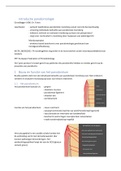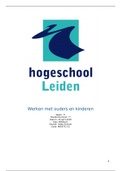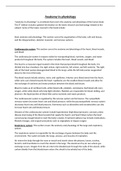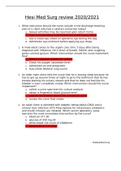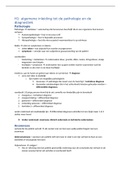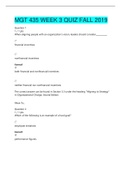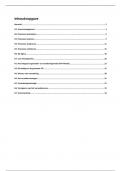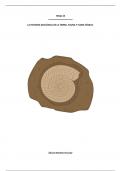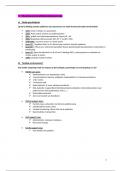enzyme PP5 in Rattus norvegicus.
Abstract
Phosphatases play a key role in many biological functions. PP5, a member of the PPP
family, consists of a catalytic domain and a TPR domain. PP5 displays a low standard
activity in comparison with other PPP members. Because PP5 plays an important role in cell
survival, proliferation and apoptosis of DNA-damaged cells, among other things, it is
important to understand more about its function. Previous research has proven that
interaction of other proteins with the TPR domain stimulates phosphatase activity. One of
these proteins, Hsp90, causes dissociation of the TPR domain from the catalytic domain
after binding the TPR domain. The exact function of the TPR domain is, however, unknown.
Therefore, the role of the TPR domain regarding the phosphatase activity has been
examined for PP5 of Rattus norvegicus. This was achieved by comparing the phosphatase
activity of the full length protein and a deletion mutant lacking the TPR domain. The
phosphatase activity of the deletion mutant was found to be higher. These findings indicated
that the TPR domain autoinhibits the phosphatase activity of PP5 in Rattus norvegicus.
Introduction
Phosphorylation and dephosphorylation of proteins is a post-translational protein modification
that regulates many biological pathways and functions (Yang et al., 2005). The largest class
of protein phosphatases are the phosphoprotein phosphatases (PPP). Members of the PPP
family catalyse reactions with serine and threonine as substrate (Farkas et al., 2007). Serine/
threonine protein phosphatase 5 (PP5) is a member of the PPP family. PP5 plays a role in
many biological functions, including differentiation, proliferation, migration, apoptosis and cell
survival (Hinds & Sánchez, 2008). PP5 consists of a C-terminal phosphatase domain and an
N-terminal tetratricopeptide (TPR) domain (Chinkers, 2001). PP5, and its yeast homolog
PPT, are the only known protein phosphatases with a TPR domain (Hinds & Sánchez, 2008).
In comparison to other members of the PPP family, PP5 displays a low standard activity.
This lack of activity could possibly be caused by the TPR domain.
It has been found that PP5 plays an important role in activating the checkpoint ATM kinase in
DNA-damaged cells (Ali et al., 2004). When ATM is not activated by PP5, cell cycle arrest
and apoptosis of the damaged cells will not occur, which could result in carcinogenesis.
Therefore, it is important to understand more about the PP5 protein and its TPR domain. A
better understanding of the function of PP5 can aid in finding more proteins capable of
activating PP5, thereby stimulating or downregulating pathways to optimal levels.
Previous research by Ramsey and Chinkers (2002, as cited by Yang et al., 2005) revealed
that the chaperone protein Heat Shock Protein 90 (hsp90) interacts with TPR domains,
including the TPR domain of PP5. Hsp90 and other proteins that interact with the TPR
domain of PP5 stimulate phosphatase activity. Yang et al. (2005) have indicated that the
contact point between the catalytic domain and the TPR domain of PP5 contains the Hsp90
binding groove of the TPR domain. This would suggest that binding of Hsp90 causes
dissociation of the TPR domain from the phosphatase domain, resulting in activation of PP5.
Research conducted by Sinclair et al. (1999, as cited by Yang et al., 2005) has shown that
removal of 13 C-terminal residues, also known as the αJ helix, makes PP5 more prone to be
cleaved by trypsin between the TPR and catalytic domain. Following, Kang et al. (2001) have
shown that deletion of the C-terminal residues leads to a tenfold activation of PP5. This
would again suggest that the TPR domain inhibits the activity of PP5.
However, the exact function of the TPR-domain still remains unclear.
, Therefore, it will be assessed what the function of the TPR domain is in the phosphatase
activity of the enzyme PP5 from Rattus norvegicus (RnPP5). Regarding the previous
findings, it is hypothesised that the TPR domain autoinhibits the phosphatase activity of PP5
from Rattus norvegicus. The experiment will be conducted by first obtaining the full length
PP5 protein (PP5-FL) and of a deletion mutant lacking the TPR domain (PP5-ΔTPR) using
recombinant DNA technology and finally comparing the phosphatase activity. The effect of
the TPR domain on the phosphatase activity of PP5 will be determined by a phosphatase
assay. It is expected that the phosphatase activity of the PP5-FL protein will be lower than
the activity of the constructed PP5-ΔTPR protein.
Materials & Method
PCR amplification
To amplify the PP5-FL and the PP5-ΔTPR fragments the following primers were used:
pGEX-F (5’-GCAGGGCTGGCAAGCCACGTTTGGTG-3’); dTPR-Rn-F (5’-
CGGGATCCGTCGTGGACTCTCTGGACATCG-3’) and pET32a-R (5’-
GCTCAGCGGTGGCAGCAGCCAACTCAGC-3’). The PCR was performed on 10 ng
pGEX/pET21a-RnPP5 using a PCR-mix containing 250 nM forward primers, 250 nM reverse
primers, 0.1 mM dNTPs, 5U SuperTaq polymerase diluted in SuperTaq buffer. The annealing
temperature of the primers was 52°C. A standard PCR program was used. A negative control
without DNA template was included. The amplified PCR-products were analysed using gel
electrophoresis with a 1% agarose gel.
To obtain purified PP5-FL and PP5-ΔTPR fragments, PB buffer was first added to the
remaining PCR-products, after which the products were washed with 750 µl PE buffer using
a QiaQuick column. The DNA was finally eluted with 30 µl EB buffer.
DNA digestion
In order to digest the purified PCR-products (PP5-FL and PP5-ΔTPR) the restriction
enzymes XhoI and BamHI were used. The digestion was performed on 30 µl purified PCR-
product using a mix containing 1x FastDigest buffer, 1 µl FastDigest XhoI, 1 µl FastDigest
BamHI. The reaction was incubated overnight at 37°C. To purify the digested DNA samples
DNA purification was performed according to the aforementioned purification protocol. The
purified DNA samples were analysed with Nanodrop to determine the DNA concentration.
Ligation into the pET32a vector
To clone the digested PP5-FL and PP5-ΔTPR fragments into the pET32a vector, the vector
was digested by BamHI and XhoI also. The ligation was performed on 43.2 ng PP5-FL and
28.0 ng PP5-ΔTPR product. The ligation-mixes additionally contained 1U T4 DNA ligase, 2 µl
ligase buffer and 50 ng of the digested pET32a vector . Multiple controls were included: a
negative control (control I), with only water; a positive control (control II), containing the
undigested pET32a vector, but no ligase and insert DNA; a control without ligase and insert
DNA (control III) and a final control which did not contain insert DNA (control IV).
Transformation of E. coli XLI
To transform E.coli XLI with the recombinant DNA vector, competent E. coli XLI cells were
first incubated with the ligation-mix for 45 minutes on ice. Following, the cells were given a
heat shock of 90 seconds at 42°C and were recovered by adding 1 ml LB medium. After
incubation at 37°C for 45 minutes both samples and controls were plated on LB agar plates
with 100 µg/ml ampicillin. 100 µl of PP5-FL, PP5-ΔTPR and control 2 were first plated. Of the
remaining controls and of the samples 100 µl was also plated after concentrating the cells 10
times. After incubation overnight at 37°C three colonies of the PP5-FL and PP5-ΔTPR plates
were resuspended in water. From the positive control one colony was preserved, and a
negative control containing only water was made as well. A colony PCR was conducted to
examine whether the E. coli XLI were transformed with the correct vectors. The PCR-mix
consisted of 500 nM dTPR-Rn-F primer, 500 nM pET32a-R primer, 0.2 mM dNTPs, 1x PCR


